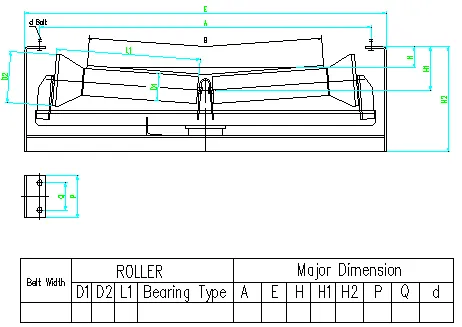 Afrikaans
Afrikaans  Albanian
Albanian  Amharic
Amharic  Arabic
Arabic  Armenian
Armenian  Azerbaijani
Azerbaijani  Basque
Basque  Belarusian
Belarusian  Bengali
Bengali  Bosnian
Bosnian  Bulgarian
Bulgarian  Catalan
Catalan  Cebuano
Cebuano  Corsican
Corsican  Croatian
Croatian  Czech
Czech  Danish
Danish  Dutch
Dutch  English
English  Esperanto
Esperanto  Estonian
Estonian  Finnish
Finnish  French
French  Frisian
Frisian  Galician
Galician  Georgian
Georgian  German
German  Greek
Greek  Gujarati
Gujarati  Haitian Creole
Haitian Creole  hausa
hausa  hawaiian
hawaiian  Hebrew
Hebrew  Hindi
Hindi  Miao
Miao  Hungarian
Hungarian  Icelandic
Icelandic  igbo
igbo  Indonesian
Indonesian  irish
irish  Italian
Italian  Japanese
Japanese  Javanese
Javanese  Kannada
Kannada  kazakh
kazakh  Khmer
Khmer  Rwandese
Rwandese  Korean
Korean  Kurdish
Kurdish  Kyrgyz
Kyrgyz  Lao
Lao  Latin
Latin  Latvian
Latvian  Lithuanian
Lithuanian  Luxembourgish
Luxembourgish  Macedonian
Macedonian  Malgashi
Malgashi  Malay
Malay  Malayalam
Malayalam  Maltese
Maltese  Maori
Maori  Marathi
Marathi  Mongolian
Mongolian  Myanmar
Myanmar  Nepali
Nepali  Norwegian
Norwegian  Norwegian
Norwegian  Occitan
Occitan  Pashto
Pashto  Persian
Persian  Polish
Polish  Portuguese
Portuguese  Punjabi
Punjabi  Romanian
Romanian  Russian
Russian  Samoan
Samoan  Scottish Gaelic
Scottish Gaelic  Serbian
Serbian  Sesotho
Sesotho  Shona
Shona  Sindhi
Sindhi  Sinhala
Sinhala  Slovak
Slovak  Slovenian
Slovenian  Somali
Somali  Spanish
Spanish  Sundanese
Sundanese  Swahili
Swahili  Swedish
Swedish  Tagalog
Tagalog  Tajik
Tajik  Tamil
Tamil  Tatar
Tatar  Telugu
Telugu  Thai
Thai  Turkish
Turkish  Turkmen
Turkmen  Ukrainian
Ukrainian  Urdu
Urdu  Uighur
Uighur  Uzbek
Uzbek  Vietnamese
Vietnamese  Welsh
Welsh  Bantu
Bantu  Yiddish
Yiddish  Yoruba
Yoruba  Zulu
Zulu take-up pulley
Understanding Take-Up Pulleys Essential Components in Mechanical Systems
Take-up pulleys are essential components in various mechanical systems, particularly in conveyors, cable systems, and other machinery that utilizes belts or cables to transfer power or materials. Their primary function is to maintain the required tension in these systems, ensuring smooth operation, reducing wear and tear, and enhancing overall efficiency. In this article, we will explore the significance of take-up pulleys, their design, applications, and maintenance considerations.
What is a Take-Up Pulley?
A take-up pulley is a type of pulley that accommodates the adjustment of tension in a belt or cable system. It is designed to take up slack in the belt or cable, which can occur due to wear, stretching, or temperature variations. The take-up pulley is typically mounted on a frame that can be moved to adjust the position of the pulley, thereby regulating the tension in the belt or cable.
Importance of Take-Up Pulleys
In any belt-driven system, maintaining the correct tension is crucial for several reasons
1. Efficiency and Performance The right amount of tension ensures that the belt or cable can effectively transfer power without slipping. This maximizes the efficiency of the system and improves performance.
2. Wear Reduction Excessive slack can cause the belt to rub against adjacent components, leading to increased wear and a shorter lifespan for both the belt and the machinery. A properly tensioned system minimizes friction and wear.
3. Safety Overly loose belts can slip, while overly tight belts can cause undue stress on components, leading to potential failures. Proper tension management enhances safety in mechanical operations.
4. Noise Reduction Systems that operate under proper tension generate less noise and vibration, leading to a more comfortable working environment.
Design Considerations
Take-up pulleys come in various designs, depending on the specific application. Some key design features include
- Adjustability Most take-up pulleys can be adjusted vertically or horizontally to accommodate the required tension. This can be done manually or through automated systems.
take-up pulley

- Materials The materials used for take-up pulleys must withstand the operational conditions, including load, speed, and environmental factors
. Common materials include steel, aluminum, and reinforced plastics.- Belt or Cable Compatibility Different applications require specific types of belts or cables. Take-up pulleys are designed to work with a variety of belt or cable types, including flat belts, V-belts, and chain systems.
Applications
Take-up pulleys are widely used across numerous industries. Some common applications include
- Conveyor Systems In warehouses and manufacturing plants, take-up pulleys are vital for maintaining belt tension in conveyor systems that transport goods and materials.
- Mining and Quarrying Heavy-duty take-up pulleys are employed in mining operations to handle massive loads and transfer materials efficiently.
- Textile Industry In textile manufacturing, take-up pulleys play a role in loom and spinning machines, where consistent tension is crucial for product quality.
- Elevators and Escalators In vertical transport systems, take-up pulleys help manage the tension in cables, ensuring safe and smooth operation.
Maintenance Considerations
Proper maintenance of take-up pulleys is essential to ensure their longevity and efficient performance. Regular inspections should be conducted to check for wear, alignment, and lubrication. Additionally, operators should be aware of any unusual noises or vibrations, as these can indicate potential issues with the pulley system.
Conclusion
Take-up pulleys are indispensable components in modern mechanical systems. They play a critical role in ensuring that belts and cables operate efficiently, safely, and with minimal wear. By understanding their importance, design, applications, and maintenance, operators can enhance the longevity and performance of their machinery, ultimately leading to more efficient industrial processes.
-
Revolutionizing Conveyor Reliability with Advanced Rubber Lagging PulleysNewsJul.22,2025
-
Powering Precision and Durability with Expert Manufacturers of Conveyor ComponentsNewsJul.22,2025
-
Optimizing Conveyor Systems with Advanced Conveyor AccessoriesNewsJul.22,2025
-
Maximize Conveyor Efficiency with Quality Conveyor Idler PulleysNewsJul.22,2025
-
Future-Proof Your Conveyor System with High-Performance Polyurethane RollerNewsJul.22,2025
-
Driving Efficiency Forward with Quality Idlers and RollersNewsJul.22,2025





























